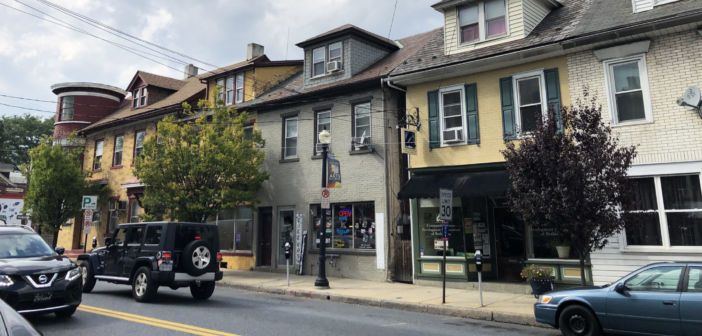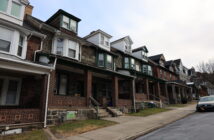A Bethlehem resident making minimum wage of $7.25 would have to work 143 hours per week to afford a three-bedroom house at fair market rent. With 168 hours in a week, this wouldn’t be feasible.
Fair market rent is the price that the federal government deems reasonable to charge tenants. In the Lehigh Valley, the fair market rent increased 8 percent from 2018 to $1,464 for a three-bedroom house or apartment, said Anna Smith, director of Community Action Development Corporation of Bethlehem.
She said income isn’t increasing 8 percent to match the fair market rent. Affordability is defined as 30 percent of a typical income, so in order to afford a home, Smith said people would have to make $54,080 a year – more than $20 an hour, far higher than low-income wages.
Low income levels in Bethlehem continues to be an issue because of low wages, housing costs and inherent natural divides within the community, but efforts by the city and government to improve affordability will benefit low-income populations.
The median Bethlehem household income ($51,880) is high compared to Allentown ($38,522) and Easton ($46,835) according to Data USA, but Alan Jennings, executive director of Community Action Committee of the Lehigh Valley, said the greater number of wealthier residents bring the median up, so Bethlehem appears to not have a low-income issue. In fact, Smith said 30 to 40 percent are considered low-income.
People struggle to pay for basic necessities as expenses rise due to businesses growing and middle- to upper-class residents moving in.
Though income has been rising steadily over the years, Jennings said housing costs are increasing at a faster rate than rapidly developing markets. Older communities, which are the most affordable and tend to offer low wage jobs, still house low-income residents.
“Most of the folks who would qualify as low-income tend to be working in the low paying service sector jobs,” Smith said. “…You’re typically not making necessarily a living wage. If you’re lucky, maybe $16 an hour, but a lot of folks are making less than that.”
Unreliable income also poses a challenge. Smith said employers in low wage jobs often don’t schedule steady hours, preventing people from working multiple jobs.
Amy Brensinger, a Bethlehem community member, said her job as a server is unreliable because her earnings depend on the amount of tips she receives. She said she often lives paycheck-to-paycheck trying to afford rent.
According to Bethlehem’s 2016 Community Health Needs Assessment, 40 percent live in substandard housing, which is greater than that of both Northampton and Lehigh counties, the state and the U.S.
“It seems like there’s a dividing point of where the low-income are and then where the other people live, …” said Pamela Lewis, manager of Community Partnerships at New Bethany Ministries. “So if you go over to the North Side, that’s where economically they are doing very well, and in our cities, they’re struggling. That’s the way it’s set up, unfortunately.”
Brensinger thinks the South Side is actually becoming more expensive as surrounding students drive the need for housing. She said people seem to be moving there because of its recent revitalization, and Bethlehem Steel has become a historic attraction.
Alicia Karner, director of Bethlehem’s Department of Community and Economic Development, said the lowest incomes are found on the South Side, but the department invests “a lot of time and energy” on poverty, and low-income levels exist everywhere.
Jennings said the income divide between the North and South sides has existed since the beginning of Bethlehem Steel, when managers lived on the North Side, and workers lived on the South Side. As the economy grows, demand forces prices up and outpaces the ability for low-income to catch up.
“Instead of focusing on the people who have lived here our whole lives and making it more affordable for us to continue living here, (Bethlehem) is focusing on bringing in people with more money to live here,” Brensinger said.
She said employers should offer jobs that are easier to obtain and base wages on experience and work ethic.
Smith said larger businesses can afford to pay employees better, but some won’t without legislation or pressure. However, higher salaries will retain workers.
“First, increase the minimum wage,” Jennings said. “Second, government and community resources that make it possible to improve the housing stock.”
The Section 8 Housing Choice Voucher Program allows people who qualify based on income to use vouchers on any residence priced at fair market rent or less, paying 30 percent of their income while the government covers the remainder.
Smith said those on Section 8 are employed or collecting disability payments.
“Typically, you’re paying what you can afford based on your income,” she said “These days, Section 8 is really restricted. There are only a certain number of vouchers, and so often, families are on wait-lists years long before they could get access to one.”
Smith suggested expanding the availability of vouchers because rent is people’s primary expense, and it “eats into” income. She believes being able to afford housing is a human right.
Lewis said mixed housing is needed in the community to provide for all income levels, especially those with limited incomes.
“I would like to see the government address this issue since housing is a basic need,” she said.
Inclusionary zoning requires new development projects that include housing to set aside a certain percentage as affordable, which Smith said could alleviate income disparities.
The Lehigh Valley Community Land Trust acquires and rehabs properties, selling them at affordable prices to low- to moderate-income families. Smith said encouraging home ownership will help them reach financial stability.
“There’s a lot of these different programs that attack things from a lot of different angles that could be successful in creating both a safety net—so that when people have an emergency, it doesn’t mean they’re out on the street—but also helping people build wealth in the long term and to get out of that situation,” Smith said.






Comment policy
Comments posted to The Brown and White website are reviewed by a moderator before being approved. Incendiary speech or harassing language, including comments targeted at individuals, may be deemed unacceptable and not published. Spam and other soliciting will also be declined.
The Brown and White also reserves the right to not publish entirely anonymous comments.
4 Comments
What happened to downtown Allentown liars keep your big city crime you wanted , now you eat it ! Leave Bethlehem alone! You want to look like Newark NJ you got it . Same ideas , you raped Allentown of its history! Trump in Harlem Displacement it’s time to be honest!
The article is written well enough but overall the message is absurd. The complaints are accurate, but the solutions are some of the biggest drivers of the problem. How will government subsidies and forced behavior lower prices? A substantially larger minimum wage will make housing more affordable by lowering housing costs? Maybe someone needs to take an economics course 101 before they start telling other people what to do. The Author isn’t necessarily at fault but the people she interviewed are clueless. Why disseminate viewpoints that are devoid of economics and common sense?
Having been in involved in more than 200 LIHTC developments and dozens of HOPE VI projects across the country I am astounded at Bethlehem’s continuing archaic push to concentrate low income persons into one part of town – the south side of Bethlehem.
Social and economic integration of low income persons across the community has been shown to reduce crime, improve educational outcomes, increase access to jobs and healthcare, and reduce food desserts as well as increase overall property values. Integrated mixed housing has been practiced for more than twenty years in enlightened and improved parts of the country like Washington DC SE Waterfront, northside of Chicago, and New Orleans PHAs.
Continuing to place affordable housing into one area is bad for all residents but especially the low income residents. The outcomes from a more enlightened policy can can be measured and will come in the several areas affected, i.e., better health/nutrition and education outcomes, improved safety, access to more jobs and improved real estate values – after improvements have impacted lives there is the possibility of improving credit scores and increasing home ownership of these residents.
This sounds terrific until you start talking about transportation. Chicago has a superb and very convenient transit system; the Northside’s served by…four El lines, I think (Red, Brown, Purple, Blue) and countless bus routes, running day and night. The Lehigh Valley does not have a superb transit system, though it’s not terrible for the size of the area. One thing middle-class people don’t want in their suburban neighborhoods is lots of bus service coming through their streets and bringing poor people around. Which is why, if you’re poor and you don’t live in a major metro area, you live near a few things: concentrations of jobs and transit hubs. You do this even if you want your kids going to that good school, because somehow you have to be able to get back and forth to that school, and if it’s minivan city out where that school is, you have a problem.
South Bethlehem is served by 7 LANTA routes. You get another good concentration right across the river, within walking distance. The rest of Bethlehem is a transit wasteland. You might get one or two routes near you, or none at all.
Put down the housing theory book, park your car in a garage somewhere and try living for a month anywhere a couple miles north of the river. Don’t ask friends for rides. Just give it a shot and report back on how it’s going. Tell us how you’re managing the basics: getting to work, buying groceries, going to the doctor, that kind of thing. And then explain how you’re going to convince your neighbors to accept having three or four new bus lines running through the neighborhood, day and night, and how you want to connect these lines to Allentown’s downtown hub.